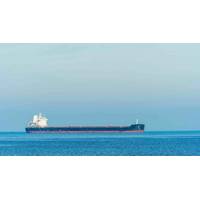Canada: Oil Facilities Largely Okay, Restart a Challenge
The mass evacuation of residents from the wildfire-devastated Canadian oil town of Fort McMurray is likely to significantly delay the restart of production, even though energy facilities themselves have escaped major damage from the flames.
The huge wildfire that entered its second week on Sunday has destroyed entire neighborhoods in the town, forcing nearly 100,000 people to flee.
Even though Canadian officials on Sunday showed some optimism that they were beginning to get on top of the wildfire, oil prices jumped in early Asian trading on concerns over the loss of production capacity caused by the fire -- equivalent to around half of the country's oil sands production.
Energy facilities were barely touched through the first week of Alberta's devastating wildfire, protected by fire breaks, other defenses and provincial firefighting crews.
But thousands of evacuees -- many of whom are essential oil industry workers -- are camped out in nearby towns and stand little chance of returning soon, even if their homes are intact. The city's gas has been turned off, its power grid is damaged, and the water is undrinkable.
"It's the human element," said Mark Routt, chief economist for the Americas at KBC Advanced Technologies in Houston.
"When you have an operator and his family needs to be evacuated, the plant may be in good shape, but what is the operator going to do? Humans have to operate the plant, too."
Routt estimated that production will be shut for two to three weeks, minimum. And if fires do pass through major oil operations, he said, a restart could take months:
"Many of these plants have a fireproof control room - the problem will be equipment on the units," he said, referring to production facilities.
Producers whose facilities are untouched may also find that their contractors fared less well.
"If some major service operations (in Fort McMurray) are damaged, the oil sands will still get back online, but it may be at a higher cost than before, maybe having to secure service companies from much further away," said Jackie Forrest, analyst at ARC Financial.
A prolonged shutdown will heighten concerns about supplies after three major oil firms warned on Friday they won't be able to deliver on some contracts for Canadian crude. Fires around the oil sands last summer knocked out 10 percent of capacity but the two firms affected were back up and running within 2 weeks.
Only one oil sands production site, CNOOC unit Nexen's Long Lake facility, has sustained minor damage, and provincial fire officials said on Sunday they expected to hold flames back from Suncor Energy Inc's main oil sands plant north of Fort McMurray.
Alberta's vast oil sands are the world's third-largest crude reserves. The fire has shut down about 1 million barrels per day or 40 percent of total oil sands production.
The fire that some have started calling "the beast" was not the first to hit the oil sands. But the huge scale of the inferno means there is no real precedent for the challenge.
BUFFER ZONES, DEDICATED FIREFIGHTERS
Suncor has boosted fire protection around its facilities, using bulldozers and other heavy equipment to clear trees and vegetation, and installing water sprinklers and pumps, said spokesman Paul Newmarch.
"We have experienced, trained staff on site and monitoring technology to protect the well-being of our people and assets," he said.
Canadian Natural Resources Ltd constructs facilities at an "appropriate distance" from the tree line to reduce the risk of fire, spokeswoman Julie Woo said in an email.
She said the company has an on-site fire department at its Horizon facility, with 42 full-time firefighters and 65 auxiliary staff who can step in as needed.
Syncrude, majority-owned by Suncor, has two crews of its own firefighters in Fort McMurray helping to contain the blaze. They are also monitoring the firm's local sites and can respond if needed, spokesman Leithan Slade said.
Slade said the Mildred Lake upgrader, which processes mined bitumen into refinery ready synthetic crude, is the most critical infrastructure on site and is surrounded by buffer zones free from vegetation. Syncrude's enormous open-cast Aurora mine also functions as a firebreak.
"We are working on finalizing a restart plan," said Slade. "There are a lot of folks in a lot of rooms with a lot of expertise looking at this."
In contrast, ConocoPhillips said its Surmount facility, south of town, must rely on the province for protection.
"If the fire comes through, there is nothing we can do. We don't have any fire suppression for forest fires," spokesman Rob Evans said. "There are no external defenses."
Surmount is not a conventional open pit oil sands mine, and instead extracts oil by pumping steam deep underground to liquefy tar-like bitumen so it can flow to the surface.
Evans said the site, which had some 600 workers when it was evacuated, has a fire suppression system that includes sprinklers but it is meant to deal with internal fires.
Enbridge Inc said its terminals south of Fort McMurray, which were evacuated on Wednesday, are designed to withstand fires even inside storage tanks or on roofs.
"The content of the tanks is processed heavy oil, which has low volatility," said spokesman Graham White in an email. "They are also surrounded by gravel berms and firebreaks, so there is very little risk, even from a close fire."
Shell Canada said it designs its sites with fire breaks, and that the provincial government requires wildfire control plans, which the company updates each year.
By Jessica Resnick-Ault and Liz Hampton







